What are Self Excited DC Generators?
What are Self Excited DC Generators?
Self-excited DC generator
A modern DC generator with an exciting coil is a self-excited generator, which starts with the initial current in the exciting coil. When the generator is turned off, a small magnetic force is generated in the rotor iron, which induces an electromotive force in the armature and therefore generates a current in the field windings. Initially, the weak magnetic field produces a small current in the coil, but in order to maintain self-excitation, the additional magnetic flux increases the electromotive force in the rotor, so the voltage is constantly increased until the machine is fully loaded.
Operation mechanism
A small amount of magnetism is retained in the rotor iron. This residual magnetic field in the main pole induces an electromotive force in the stator coil, which generates an initial current in the field winding.
The small current flowing through the coil enhances the magnetic field. As a result, the voltage output and field current increase. This cycle continues until the electromotive force in the armature exceeds the voltage drop at both ends of the exciting winding. However, after reaching a certain level, the field pole becomes saturated, at which point electrical equilibrium is reached, the armature electromotive force no longer increases, and the current does not increase. The resistance of the excitation winding has a certain fixed value, at which the self-excitation can be realized. This resistance value may vary according to the electrical parameters of the generator.
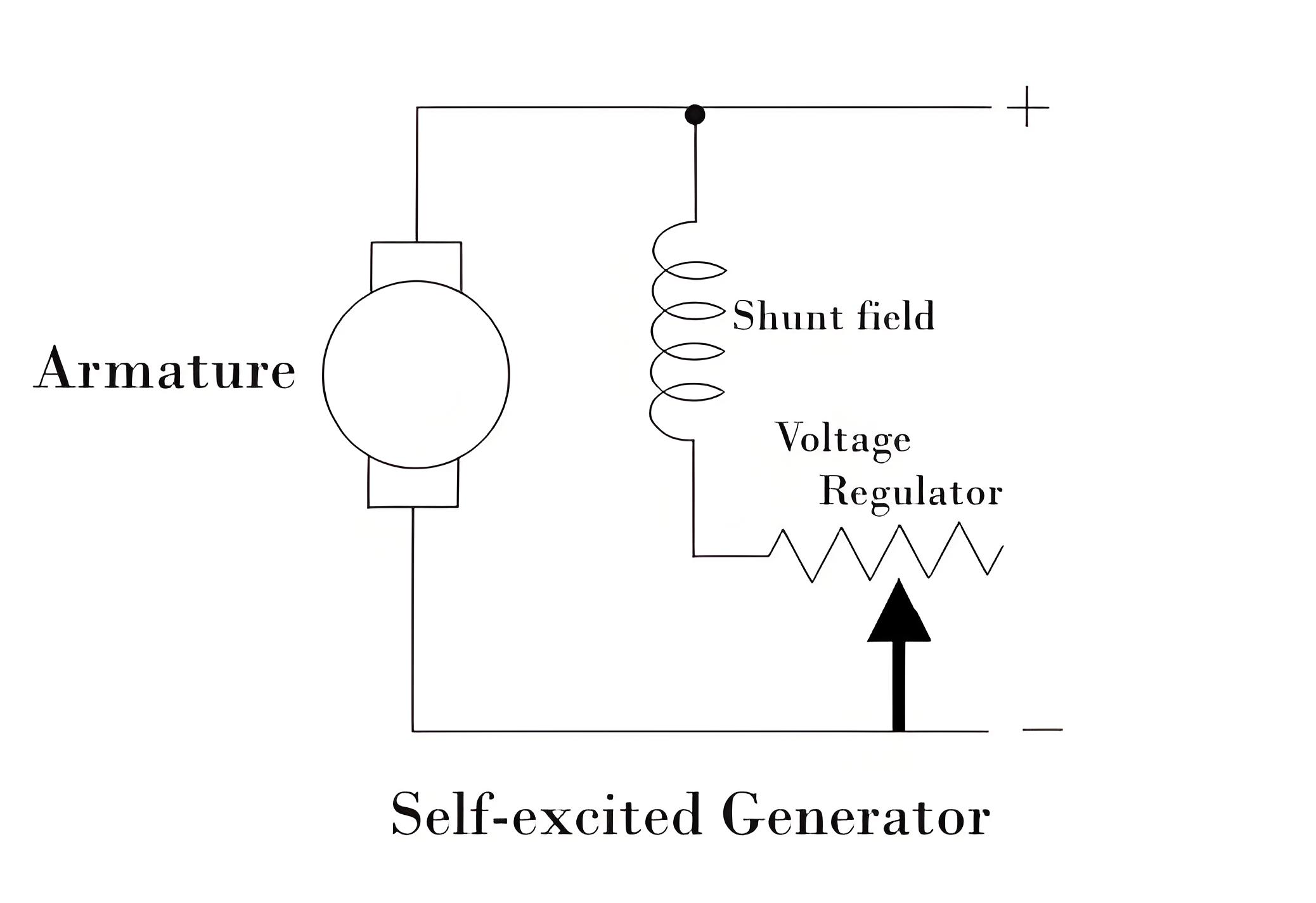
Type of DC generator
Dc generators are mainly divided into series winding, parallel winding and compound winding, each winding has different coil arrangement and voltage regulation characteristics.
Series Wound Generators
In series wound generators, the field and armature winding are connected in series, allowing current to flow through both the external circuit and the windings. The field coil has low resistance and consists of a few turns of thick wire, which increases current flow as load resistance decreases.
As a result magnetic field and output voltage increases in the circuit. In such type generator, output voltage varies directly with respect to load current which is not required in most of the application. Due to this reason, such types of generators are rarely used.
Shunt Wound DC Generators
In shunt wound generators, the field winding is connected in parallel to the armature, maintaining consistent voltage across the circuit. The field winding features many turns to achieve high resistance, limiting the current passing through it and directing the remainder to the load.
In shunt wound generator, as they are connected parallel, current in the parallel branches are independent of each other. Hence, the output voltage almost constant and if it varies then it varies inversely with respect to load current. This is because of the voltage drop as armature resistance increases.
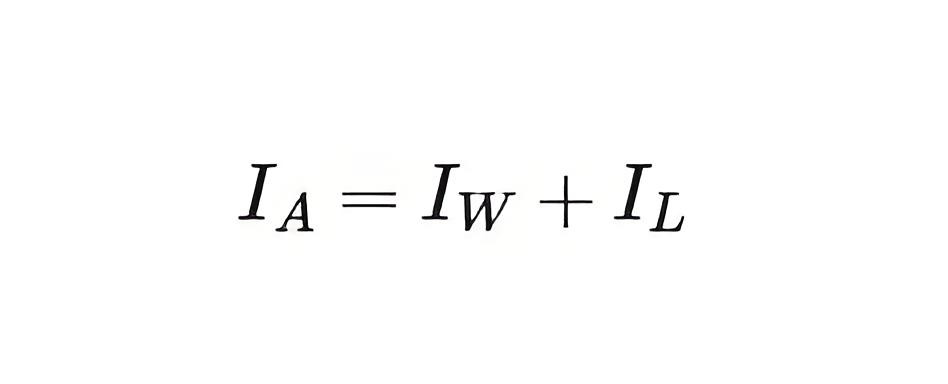
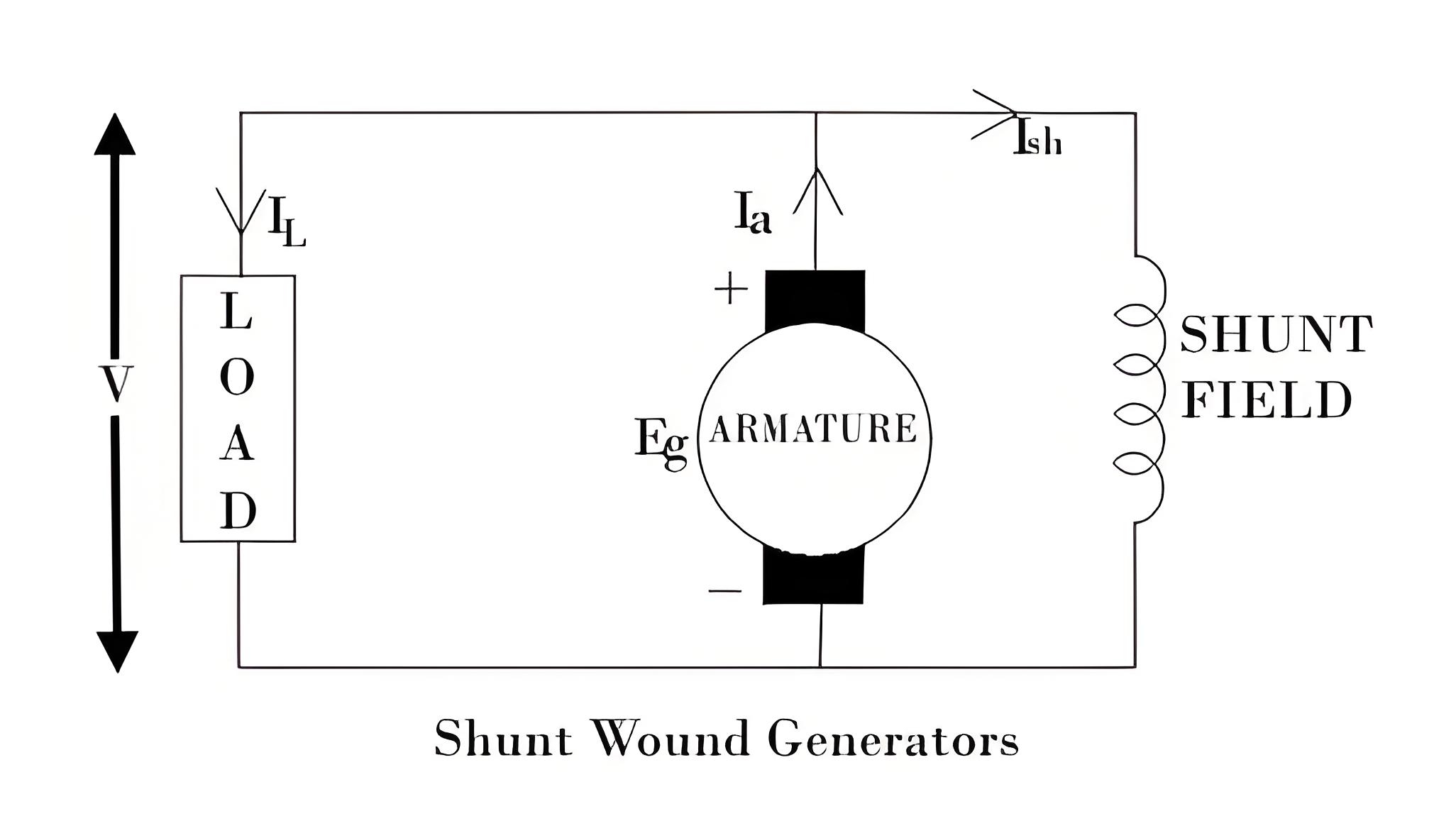
Combination Wound Generator
Compound wound generator is advanced version of series wound generator and shunt wound generator. the working principle of the generator is the combination of two types so that it prevail over the disadvantages of both. It has both types of winding; series field and shunt field winding. On the basis of their connection, compound wound generators are of two types- short shunt compound generator and long shunt compound generator.
Long Shunt Compound Generator
Here the shunt field winding is connected parallel to armature only as shown in figure. Series winding is then connected in series.
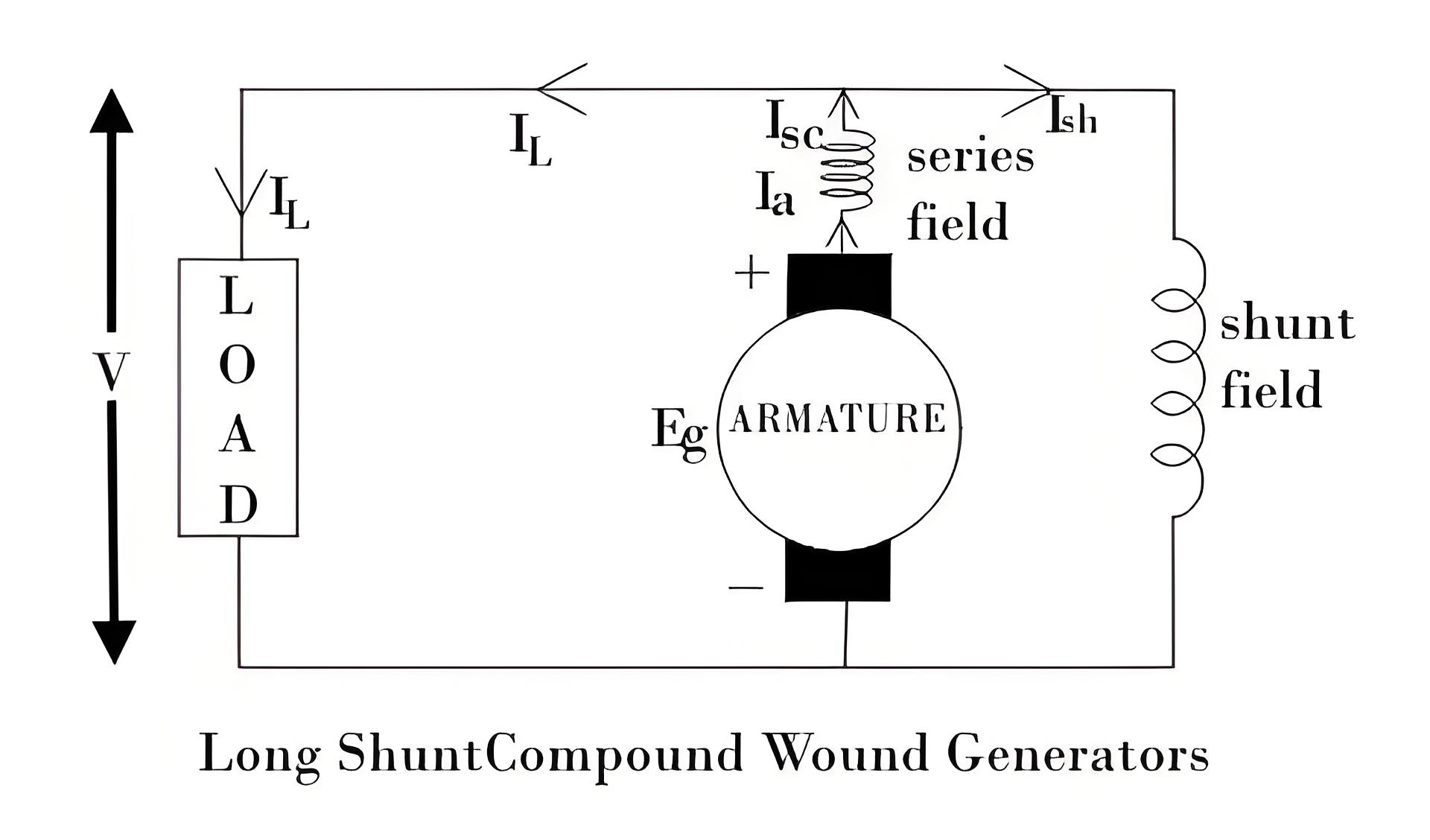
Short Shunt Compound Generator
Here the shunt field winding is connected parallel to armature only as shown in figure. Series winding is then connected in series.
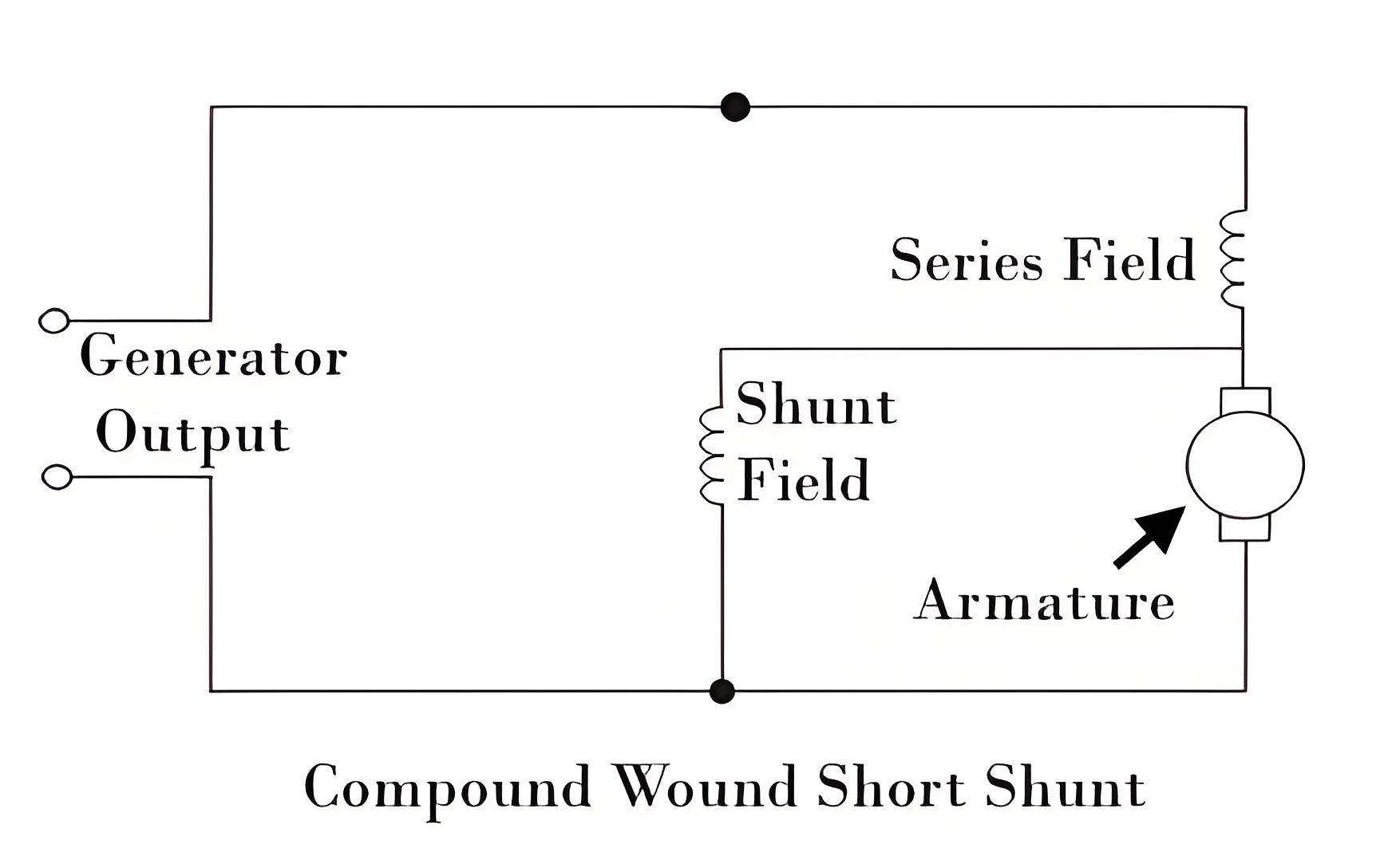
Advantages of Compound DC Generator
In compound generator, the armature voltage decreases automatically, when load current increases, due to which magnetic field produced by shunt winding decreases. But the same increase in load current flows through the series winding causes an increase in the magnetic field. So the decrease in magnetic field in the shunt field is compensated by increase in magnetic field in series field. In his manner, the output voltage remains constant as shown in figure.
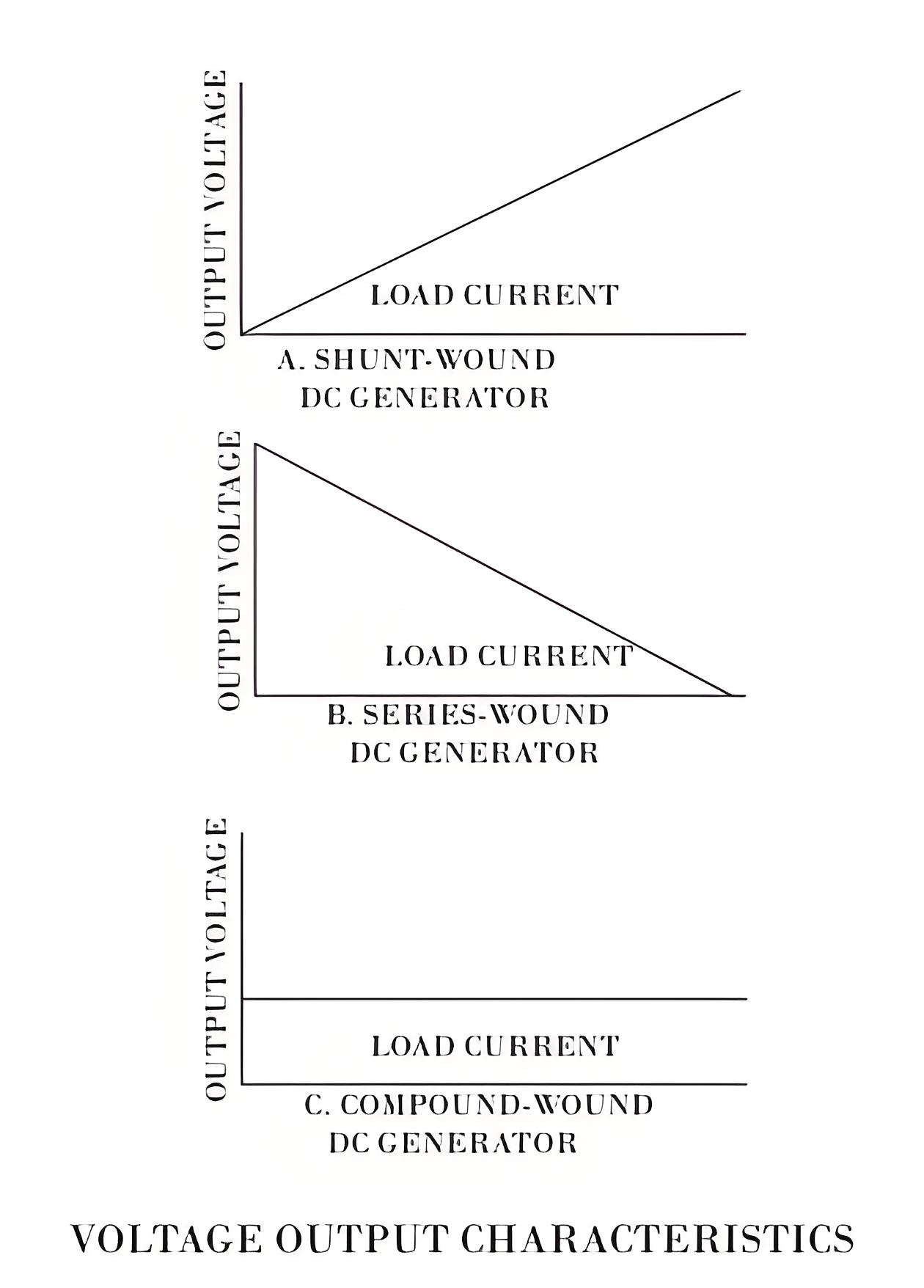
Commutative and Differential Compound DC Generator
As compound wound generator has both the fields-shunt field and series field, their combination makes lot of difference. When series field aided the shunt field, their impact is more and it is said to be commutatively compound wound. On the other hand, if the series field opposes the shunt field, then their impact is less and it is said to be differential compound generator.
The Electricity Encyclopedia is dedicated to accelerating the dissemination and application of electricity knowledge and adding impetus to the development and innovation of the electricity industry.













